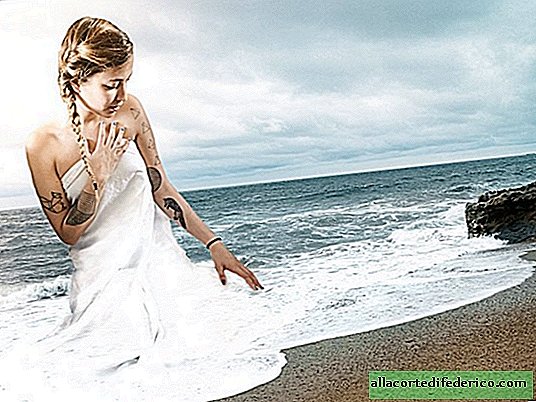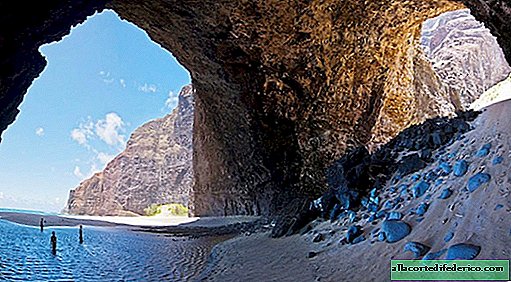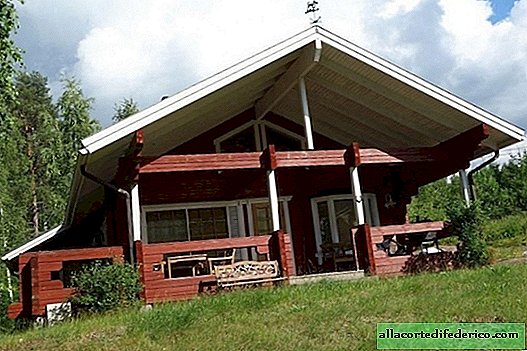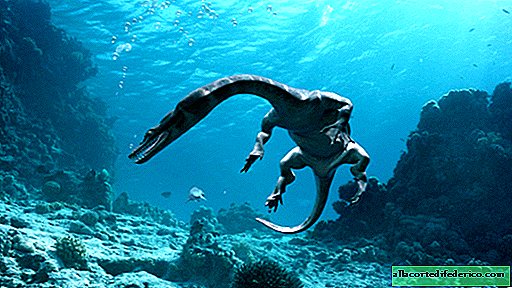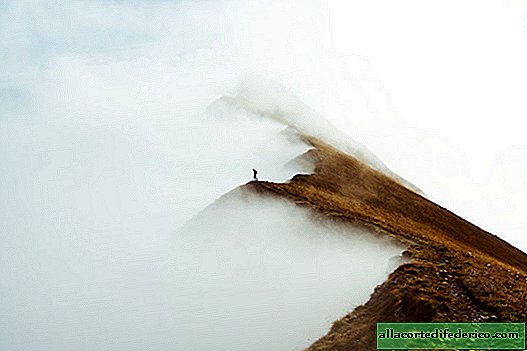Saving fire for sailors or how a lighthouse works
A lighthouse is a building that cannot be called just a building.
Lighthouses have always attracted the eyes and attention of people with their romance, of particular importance to sailors, as well as their solitude on capes and steep cliffs that protrude into the sea.
For many hundreds of years, lighthouses have been of great importance for maritime navigation, often becoming in fact a salvation for crews of ships exhausted by storms, returning home or going to a foreign port.
With the development of modern technologies, including in marine navigation, optical beacons no longer play such a significant role, giving way to radio beacons and satellite systems. But they stand, still stand, as if the wolves beaten by time, flashing in the night of the tower on the shores of the seas and bays.
Since childhood, I wanted to visit the inside of the lighthouse, climb its narrow spiral staircase to the holy of holies - to the very top, to the lamp that dozens of eyes eagerly seek in the night somewhere in the open sea.
Today I can share with you this dream, its realization - we will visit inside the Chersonesos lighthouse, which is almost 200 years old
I’ve been around the lighthouse dozens of times, but I couldn’t get inside ...
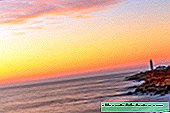
The first information about the lighthouse in these places appeared in 1789, 6 years after the first Russian warships entered the Akhtiar bay.
The arrangement of the naval military base and the laying of the city of Sevastopol required, including the organization of navigation facilities. One of which was the Chersonesus lighthouse.

Build the Chersonesus lighthouse began in 1816 with Tarkhankutsky. Leonty Spafaryev, director of the lighthouses of the most developed in this regard, the water area of the Russian Empire - the Gulf of Finland, supervised the choice of location and construction.

The lighthouse tower was a 36-meter hollow stone cone with two-meter walls at the base. To the level of the lighthouse room, the wall thickness decreased to one meter. As the operating experience showed, the margin of safety of the structure made it possible to successfully resist colossal alternating wind loads, shock of storm waves and even seismic shocks. The lighthouse survived the most serious Crimean earthquake of the XIX-XX centuries, which was in 1927.

Back in the 19th century, houses were built near the tower for the lighthouse servants. At first, the servant was huddled in just a few rooms, but later a small residential lighthouse town appeared, which, however, suffered more than once from storms and storms.
Nowadays, one of the rooms is equipped with a lighthouse-technical. It contains all the necessary radio equipment, as well as an automatic beacon control system.

Later, the lighting apparatus was modernized to provide a flashing mode of operation. Mirrors and lamps were placed on a round float dipped in a bowl of mercury. A complex gear mechanism, the principle of which is similar to the work of watches with weights, gave the float uniform rotation at a given speed.
At the end of the 19th century, the mirror illuminator was dismantled. Instead, they installed a light-optical apparatus based on Fresnel lenses, consisting of concentric rings of small thickness adjacent to each other, having a prism shape in cross section.
After the war, the lighting system was again modernized, a flashing mode of operation is no longer provided by rotating the optical apparatus, but by periodically turning the lamp on and off.
Today there is no longer a need for the constant presence of the caretaker in the lighthouse room on the tower, the manual lighting of the lighthouse and monitoring so that the light does not go out.
All this is controlled by an automatic system in an office building near the lighthouse.

The supervisor at the appointed time only has to turn the beacon on.

But it's time to go inside the tower. After all, the most interesting is ahead.

Despite the signs with the year 1816, the tower itself is not 200 years old.
During the Great Patriotic War (1941-1945), the tower was almost completely destroyed and rebuilt in 1950-1951. from reinforced concrete lined with Inkerman white stone.
How is the lighthouse tower built?
As I said, it has a height of 36 meters. The lower part is a hollow cone with a spiral staircase and four tiers of light windows to illuminate the stairs.
In the upper part there is a lighthouse room (with a round window and a fence along the contour), in which at first the lighthouse ignition system was located, and also at night there was a caretaker. At the very top - the cap in which the lamp is located. The hood has 360-degree glazing so that the light of the lighthouse is visible from everywhere.

Lighthouse room under a light hood. There is a low ceiling and there is absolutely no place to turn around. A small desk, an emergency telephone and a small porthole

And now - the holy of holies - a lighthouse lamp burning in the night is shown in the hatch.

Today, a system is used with a 1 kW quartz-halogen lamp installed during the post-war detuning of the lighthouse in 1951.
A flashing mode of operation is provided not by rotating the optical apparatus, but by turning the lamp on and off periodically. Moreover, the alternation of the pulse duration ensures the transmission of the Morse code signal "SV" - Sevastopol.
In addition, the KRM-300 circular beacon operates on the cape, transmitting the same “SV” signal for a range of up to 150 miles (280 km). In addition to it, there is equipment for a more accurate Mayak-75 navigation system, the principle of which is based on measuring the time between the signals of the master and slave stations and calculating the distance to them. Station "Mayak-75" works in conjunction with similar ones located at Cape Tarkhankut, Fiolent and Genichesk.

The moment of ignition of the lamp. Then it’s physically impossible to look at her.

View of the lighthouse town from the lighthouse tower.
The town also did not appear immediately. At first, the service staff huddled in tiny, poorly heated houses - 20 people in 4 rooms.
In the early 1870s, the first two-story building was built to accommodate the lower ranks. True, this building was badly damaged by the storm of 1876.
After the storm around the lighthouse, a brequator was erected to protect the tower and the lighthouse town from the sea.
Today, there are several two-story buildings in which people live, one way or another providing or ensuring the functioning of the lighthouse and its equipment.

At night, the lighthouse offers beautiful views of the open sea.
By the way, the lighthouse’s fire can be seen on a clear night from about 16 miles (30 kilometers) away.

Lighthouse tower at night.

It looks like a 36-meter tower from the sea.

One of the dozens of sunsets that I spent on the beach under the lighthouse.

Evening Chersonesus lighthouse.





